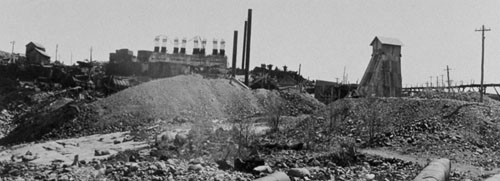Sudgylth
Government
1454-1789Up until 1454 Ils Boyard's only signs human presence was a lighthouse and an accompanying small military outpost on the Western cliff. In the summer of 1454 the lighthouse was automated and the rest of the island was sold to the System Juges. From then until 1789, Ils Boyard became a penal colony, under control by the System Juges private militia 1789-1839
With the the reformation of the Petrian judiciary system, the System Juges was abolished and all their properties were returned to the state. The penal colony at Boyard was shuttered and the Island was sold to the Southern Trade Guild. The island was renamed to Sudgylth and from then, until 1839 it was governed by the Sudgylth Trading Board. The board consisted of all Masters owning property on the island. This board would vote on tariffs and taxes and also general construction works like new piers or road infrastructure. 1839- present With the dissolution of the STG, the island and harbourtown was returned to the Petrian governent. Since then Sudgylth has been govern by a democrartic elected island council, presided by the mayor of Sudgylth.
Industry
Port Of The Middeland Sea
From its days as a guild controlled port till today, Sudgylth has been the largest harbour in the Middeland sea. Even during the Great War the harbour remained active. Due to its size and importance for the whole Middeland economy, Sudgylth is often called "Port of the Middeland Sea".Cobolt Mining
From 1830 till 1940 Sudgylth was home of the only Cobolt mine on the Imelian continent. During a geological survey of a seacave, that the STG wanted to convert into a underground docking facility, large deposits of cobalt had been discovered. The seacave was widened an fortied and two years later the first boat carrying unprocessed cobolt and copper left for the main harbor.With the dissolution of the STG in 1839 mining operations would cease for the next 5 years. During this time the Petrian government was looking for a new exploitant. However, due to the risen popularity of the Tarnap plant as a source for blue pigment, demand for the much more expensive cobolt had all but collapsed.
Yet in 1844 the Societas Coboltine started operating the mine again, with the intent of using the cobolt for the production of cobolt soaps and cobolt sulfate. After nearly a 100 years of continuous operation, the mine shuttered permanently in 1940. The operation of the mine had become economically unsustainable.




Comments